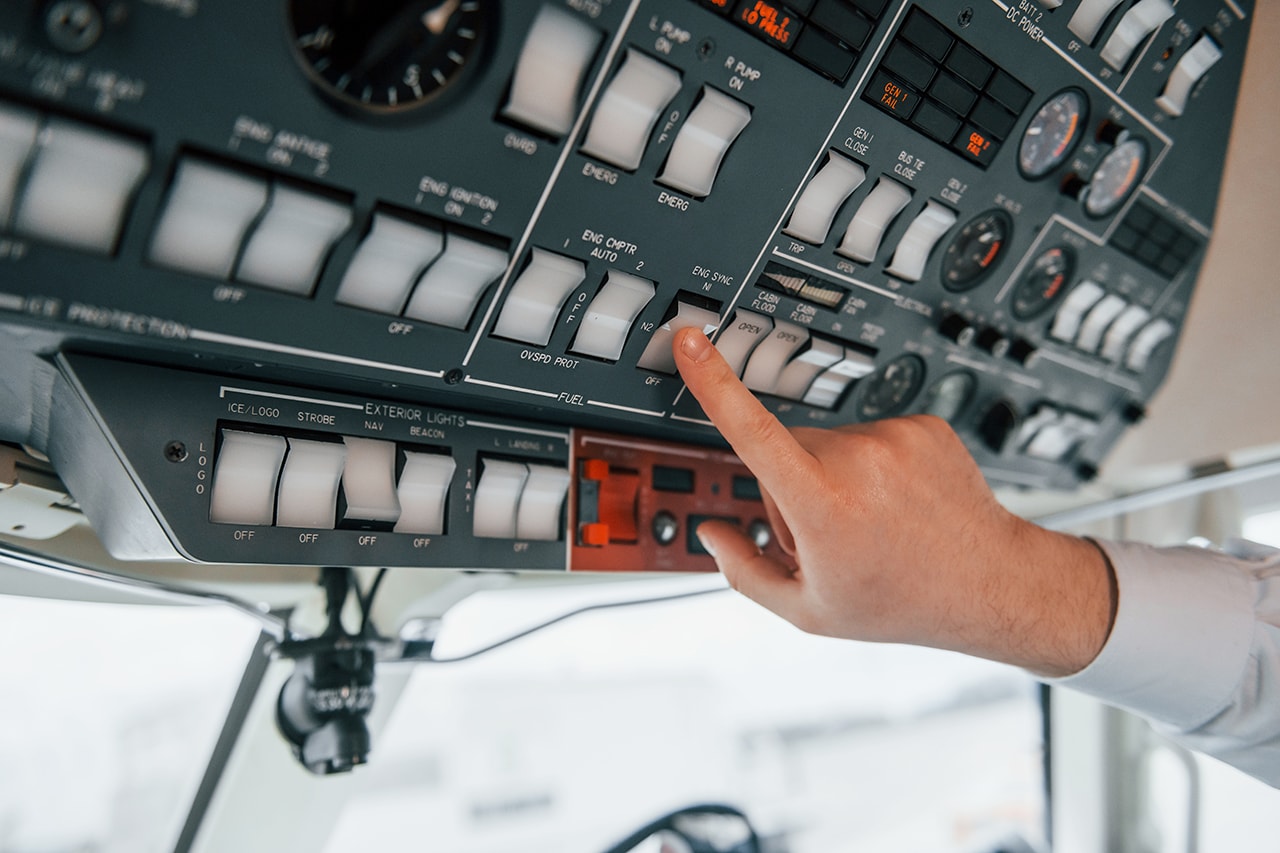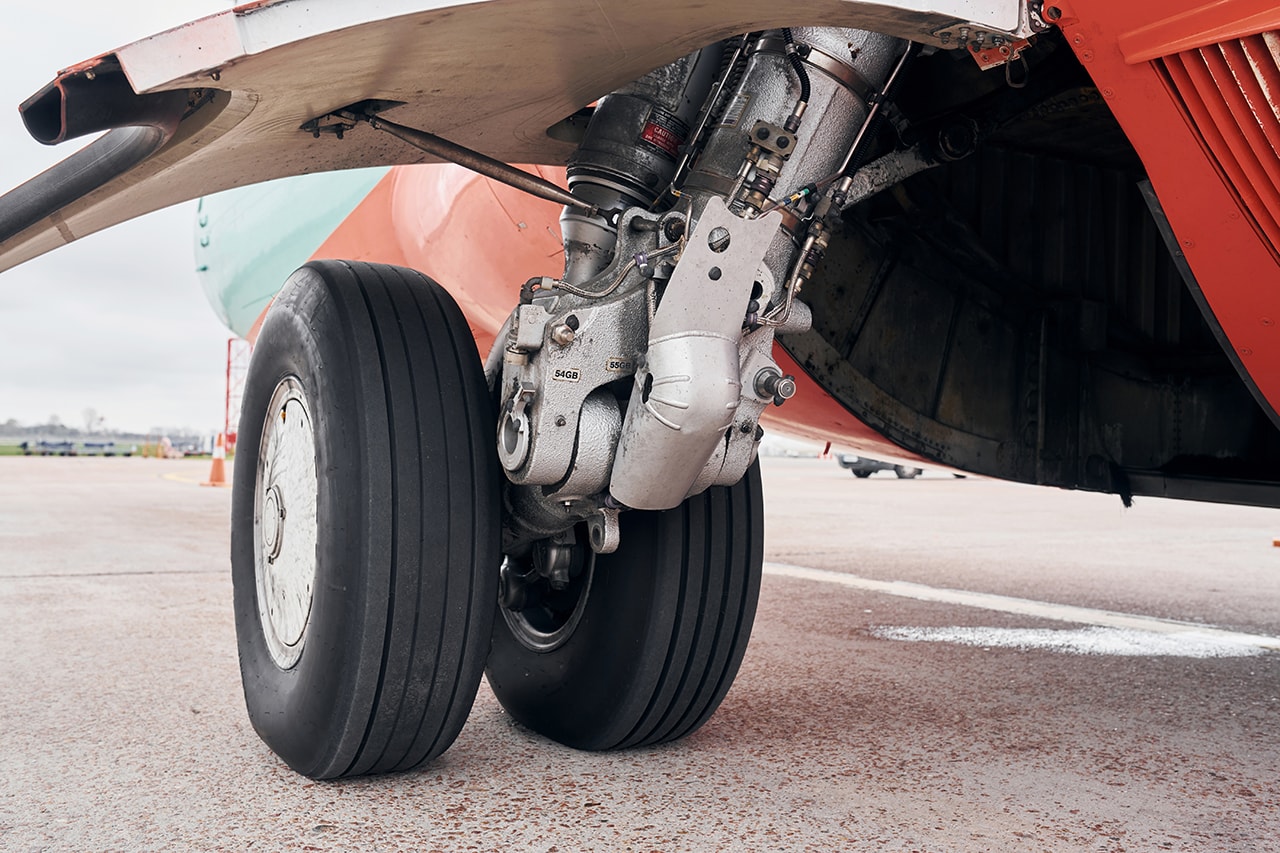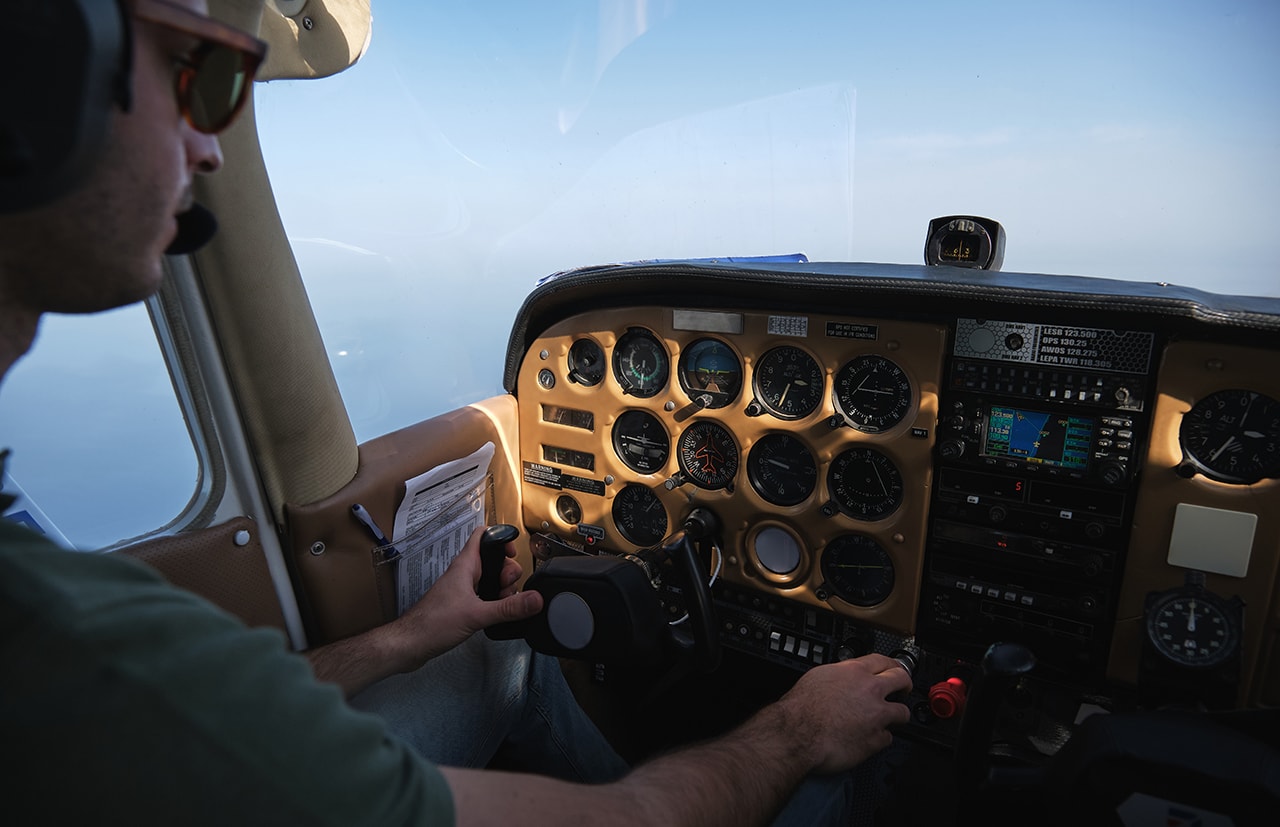Minimum Equipment and Instruments for VFR Flight
Sep 15, 2024Understanding VFR Flight Requirements
Visual flight rules (VFR) require specific instruments equipment, including 6 flight instruments, for safe flight operations
If you want to fly with confidence and security, you must follow these rules.
The primary source for these VFR requirements is 14 CFR 91.205 which lists the instruments and equipment that must be on board. Knowing these rules will help with safety and operational knowledge.
Knowing VFR flight requirements is key to legality and safety of every flight. By having the right tools and knowledge, including an approved safety belt for each occupant aged two years or older, you can fly with confidence and enjoy your flight.
Instrument and Equipment Requirements Expanded
Get to know the instruments and equipment every pilot must have to comply and be safe in VFR flying.
Knowing these will improve your flying skills and overall flying experience. In addition to VFR, understanding the Instruments Required for IFR Flight is crucial for those flying under instrument flight rules. Get to know each instrument’s role from airspeed indicator to anticollision light system and be more confident as you fly responsibly and efficiently. Let’s see how each one contributes to safe flying!
Airspeed Indicator
The airspeed indicator is a must have instrument that shows the aircraft’s speed relative to the air. Knowing airspeed is crucial for safe takeoffs, landings and adjustments during flight.
It helps pilots avoid stalling and maintain optimal performance throughout the journey.
Altimeter
An altimeter measures the aircraft’s height above sea level or ground level. By providing accurate altitude information it allows pilots to ensure they are at a safe vertical distance from terrain and obstacles and enhance situational awareness and safety during flight.
Compass
This instrument is often called a magnetic direction indicator. It helps pilots navigate by showing the aircraft’s heading relative to magnetic north.
Knowing direction is vital for route planning and in-flight adjustments so pilots can fly their chosen route.
Tachometer for Each Engine

The tachometer measures the engine’s rotational speed usually in revolutions per minute (RPM).
Monitoring engine performance through the tachometer is critical for fuel efficiency and to ensure the engine is within safe limits.
Oil Pressure Gauge for Each Engine Using a Pressure System
This gauge shows the pressure of the oil in the engine.
Maintaining proper oil pressure is critical for engine lubrication and to prevent overheating, and ultimately for the engine’s longevity and reliability during flight.
Temperature Gauge for Each Liquid-Cooled Engine
The temperature gauge shows the engine’s coolant temperature.
By monitoring this reading pilots can prevent overheating, as excessive heat can cause engine failure. Awareness of this gauge promotes proactive management of engine performance.
Oil Temperature Gauge for Each Air-Cooled Engine
Similar to the liquid-cooled engine temperature gauge, this instrument shows the oil temperature in air-cooled engines. It’s essential to know how efficient the engine is running and to avoid damage from excessive heat.
Manifold Pressure Gauge for Each Altitude Engine
This gauge shows the pressure in the intake manifold of the engine, the engine’s power output and efficiency.
Monitoring manifold pressure is critical in altitude engines to help pilots adjust for optimal performance and fuel consumption.
Fuel Gauge Indicating the Quantity of Fuel in Each Tank
A reliable fuel gauge is critical to ensure pilots have enough fuel for their flight.
This gauge alerts pilots to fuel levels so they can make informed decisions on fuel management and prevent any surprises during the flight.
Landing Gear Position Indicator, If the Aircraft has Retractable Landing Gear

This indicator shows if the landing gear is extended or retracted, a safety feature.
Pilots must verify landing gear position before landing to ensure a safe touchdown and this indicator eliminates any doubt on its position.
Approved Aviation Red or Aviation White Anticollision Light System
This light system improves visibility and prevents mid-air collisions.
By making the aircraft more visible to others especially during critical phases of flight such as takeoff and landing, these lights greatly enhance overall safety in the air.
For aircraft operated for hire over water, beyond a certain distance from shore, it is mandatory to have approved flotation gear readily available to each occupant. This enhances safety in emergency situations involving water landings.
Each occupant must have an approved restraint system, such as a safety belt, to comply with airworthiness certifications and ensure safety during various flight operations.
An emergency locator transmitter must be attached and in operable condition as part of safety protocols for U.S.-registered civil aircraft. Regular inspections and battery maintenance are essential to meet specific regulations governing their use.
By understanding and correctly utilizing these instruments and equipment, pilots can navigate with enhanced confidence and promote safety for themselves and their passengers.
Investing time in learning about each tool is an investment in a safer, more enjoyable flying experience.
VFR Flight Requirements

VFR day flying mandates a defined set of instruments and equipment to ensure safety and reliability. Essential tools include a reliable airspeed indicator, altimeter, and heading indicator, all crucial for effective flight management.
In addition to these, pilots must have a magnetic compass and a clock. These instruments are vital for maintaining orientation and timing during daytime operations. Additionally, an approved safety belt with a metal-to-metal latching device or other approved restraint system is required for each occupant aged two years or older.
For VFR night flying, the list of required equipment expands to accommodate the challenges posed by reduced visibility. Pilots still need a reliable airspeed indicator, altimeter, heading indicator, and magnetic compass.
Moreover, a clock and a dependable source of navigation must be included for safe night operations. Each element contributes significantly to a pilot’s ability to navigate confidently, whether by day or night.
Minimum Equipment List (MEL)
A Minimum Equipment List (MEL) is the key to a safe and legal flight. It’s a list of the specific equipment required for each aircraft, tailored to that aircraft’s individual specs.
Approved by the FAA, the MEL meets strict safety standards and gives you confidence in your flying. It only includes the instruments needed for that aircraft. The inspection acceptance records reflect the date of manufacture and confirm that the airplane is complete and meets FAA-approved type design data.
From the manufacturer’s master minimum equipment list (MMEL) the MEL is more restrictive to make it safer. So, every flight is equipped for the skies.
For pilots and maintenance crews the MEL is a tool to prepare and make informed decisions about the aircraft. By following the MEL, you can create a safety and reliability culture in aviation.
Minimum Equipment Requirements for VFR Day and Night Flights
The Federal Aviation Administration (FAA) has established minimum equipment requirements for Visual Flight Rules (VFR) day and night flights, as outlined in 14 CFR 91.205. These requirements are designed to ensure the safe operation of aircraft under varying conditions.
Special Considerations for Powered Civil Aircraft
Powered civil aircraft with standard category U.S. airworthiness certificates must adhere to specific instrument and equipment requirements to ensure safe operation. These requirements, outlined in 14 CFR 91.205, are designed to address the unique needs of these aircraft.
Why Compliance?

Compliance with 14 CFR Part 91 Subpart C is the key to safe flying. By following these rules airlines and pilots create a framework that puts safety first. This standardizes, reduces risk and protects crew and passengers on every flight. When everyone follows these rules, it creates an environment of trust and confidence in aviation and overall safety and efficiency in the air.
FAA
The FAA has access to approved Master Minimum Equipment Lists (MMELs) for every aircraft type.
These are the tools that help operators create their own Minimum Equipment Lists (MELs) and help pilots to identify the equipment required for a flight to be safe and compliant.
By using these lists crews can make informed decisions about what equipment must be serviceable before departure and create a safety and reliability culture in aviation that protects everyone on board.
Required MELs
Aircraft with turbine engines or operating under regulations such as Part 121, Part 135 or Part 91 require a custom Minimum Equipment List (MEL).
This highlights the need for bespoke safety standards, so each aircraft’s individual operating challenges are covered.
By having specific MELs aviation professionals can manage risk and safety better and create an environment where crew and passengers can fly with confidence and tranquility.
Guidance
The FAA is the go-to resource for aviation professionals looking for guidance on Minimum Equipment Lists (MELs) and what’s required for their operation.
Contact the FAA and get the low down on the regulations and understand the safety protocols.
This collaborative approach not only ensures compliance but also enables crews to create a safe environment for passengers and crew members and reinforces the aviation safety and excellence mantra.
Creating a MEL
If a Minimum Equipment List (MEL) is required, the FAA will help the aircraft operator develop one that covers the specific operational risks of the aircraft.
This collaborative process creates a safety and reliability culture in the aviation industry and gives crews and passengers confidence.
By working together, aviation professionals can ensure that safety remains a top priority, ultimately enhancing the overall flight experience for everyone involved.
IFR vs VFR: Key Differences
In the world of aviation, IFR (Instrument Flight Rules) mandates a higher standard of instruments and equipment compared to VFR (Visual Flight Rules).
This distinction is crucial for ensuring safe navigation under varying visibility conditions.
For IFR operations, specific equipment is essential, including a gyroscopic rate-of-turn indicator, a slip-skid indicator, and a sensitive altimeter that can be adjusted for barometric pressure.
These instruments play a vital role in maintaining spatial orientation and altitude accuracy, contributing to overall flight safety.
Additionally, pilots flying under IFR must be equipped with a clock that displays hours, minutes, and seconds, featuring either a sweep-second pointer or a digital format.
The requirements for IFR not only involve more sophisticated equipment but also necessitate extensive training, underscoring the commitment to safety and reliability in aviation.
IFR vs Instrument Flight Rules (IFR)
IFR is a big deal in aviation safety, you need advanced instruments and equipment to fly.
By following these standards like the gyroscopic rate of turn indicator and adjustable altimeter pilots are ready for anything.
This level of training and preparedness is safer and more fun for all pilots.
Instruments
Gyroscopic rate of turn indicator, slip-skid indicator, and adjustable altimeter for barometric pressure are the tools for pilots flying IFR.
These instruments work together to give you information about the aircraft’s attitude and altitude, no matter the weather.
By using these tools, pilots can react to situations, build confidence and make flying safer for everyone.
Time
Time is a big part of flight; pilots need to have accurate information about their journey. A clock showing hours, minutes and seconds, whether mechanical or digital is a required instrument in an aircraft.
This helps pilots to monitor flight time, coordinate with ATC and execute precision procedures that keep them on safe flight paths even while flying with low or no visibility.
By being aware of the time, pilots are more situational aware and that contributes to safety and smooth flying.
Training and Equipment
Instrument Flight Rules (IFR) requires more training and more equipment than Visual Flight Rules (VFR).
This means pilots have the knowledge and skills to fly in tough conditions, low visibility or bad weather.
So IFR is safer for pilots and passengers, everyone is happy and comfortable flying.
Instrument Flight Rules (IFR) needs more training and more equipment than Visual Flight Rules (VFR).
This means pilots have the essential knowledge and skills to fly through challenging conditions, low visibility and bad weather. As a result, IFR is safer for pilots and passengers, everyone can enjoy the flight together.
Airworthiness
Airworthiness is the foundation of all flight. It’s a thorough inspection of the aircraft to make sure it meets the safety standards that protects the crew and passengers.
Airworthiness of an aircraft is defined by 14 CFR Part 91 Subpart C. These rules standardize the safety for pilots to fly in any conditions.
Pilots and maintenance people must work together to achieve and maintain airworthiness.
Together they can use the FAA resources including the Minimum Equipment List (MEL) to be as safe as possible before each flight.
Airworthiness is the basis of safe flight, requires thorough inspections to make sure the aircraft meets the safety standards.
This process not only protects the crew and passengers but also the flying experience itself.
Airworthiness is defined by 14 CFR Part 91 Subpart C, which standardizes the safety for all flight conditions.
By following these standards pilots can do their job with more confidence knowing they can handle anything.
Pilots and maintenance crew must work together.
Together they can use the FAA resources including the Minimum Equipment List (MEL) to be as safe as possible.
Conclusion
Understanding the essential equipment and instruments for VFR flight is a key step in promoting safety and legality in aviation.
By familiarizing yourself with these requirements, you empower yourself to make informed decisions in the cockpit, fostering a safer flying environment for all.
Compliance with 14 CFR Part 91 Subpart C is not just a regulatory obligation; it is a vital component of safe flight operations.
Adhering to these standards supports both pilot safety and the overall integrity of aviation, elevating the flying experience for everyone involved.
Utilizing a Minimum Equipment List (MEL) and other available resources is crucial for maintaining airworthiness and regulatory compliance.
By ensuring that all required instruments and equipment are functioning properly, pilots can approach each flight with confidence, knowing they are prepared for a safe journey.
